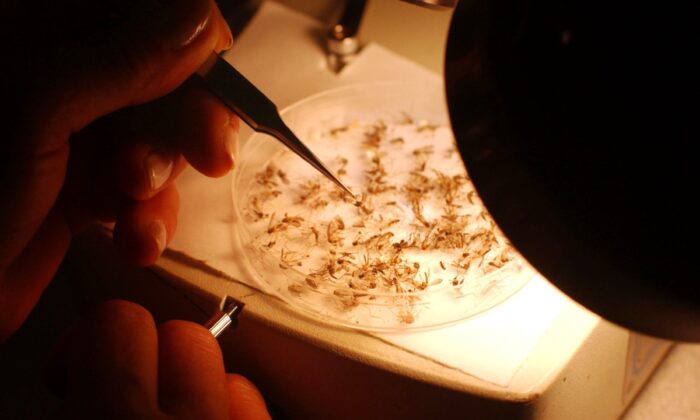The state health and agriculture departments will carry out “aerial spraying” in parts of Plymouth County as well as “truck-mounted spraying” in parts of Worcester County. It also noted that 10 communities in the state have “been raised to high or critical risk” for EEE, caused by a virus that is spread by certain types of mosquitoes. EEE can cause a fever and brain swelling, while about a third of people infected with it die, officials have said.
Eight communities in the aerial spray zone include Carver, Halifax, Kingston, Middleborough, Plymouth, Plympton, Rochester, and Wareham, the health agency said. Five communities that are in the truck spray zone include Douglas, Dudley, Oxford, Sutton, and Uxbridge, it added. “Coverage of the entire area at risk in Plymouth County may take several nights of spraying.

The truck-based spray in Worcester County will occur over multiple nights,” the release said, adding that spraying will start at dusk and end by dawn each day. For people who are in one of the spray zones, they should “assume that your area is being sprayed each night until you check the spray map and confirm that your area has been sprayed,” the department said. Earlier this month, the Department of Health announced the first human EEE virus infection in Massachusetts for this year on Aug.
16, occurring in a male in his 80s who was exposed to it in Worcester County. Jennifer Callahan, Oxford’s town manager, wrote in a memo that the family of the man who caught the virus in mid-August had reached out to her office. “They want people to be aware this is an extremely serious disease with terrible physical and emotional consequences, regardless if the person manages to live,” Callahan wrote.
She said the infected person had often recounted to his family how he never got bitten by mosquitoes. But just before he became symptomatic, he told them he had been bitten. She said the man remains hospitalized and is “courageously battling” the virus.
EEE can cause severe disease and possibly lead to death in all age groups, but people under age 15 and people over the age of 50 are at the most risk, health officials added. An EEE outbreak in Massachusetts occurred in 2019 and 2020, with 17 people infected and seven deaths, officials said. There have been three cases of eastern equine encephalitis in the United States this year, according to the U.
S. Centers for Disease Control and Prevention (CDC), one each in Massachusetts, New Jersey, and Vermont. The worst year for the disease was 2019, with 38 cases.
It’s caused by a virus and is not very common around the world. The virus typically spreads in certain swamps, including red maple and white cedar swamps in Massachusetts. People who survive are often permanently disabled, and few completely recover, Massachusetts authorities say.
The disease is prevalent in birds, and although people and some mammals can catch EEE, they don’t spread the disease..


















